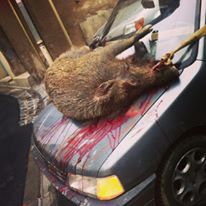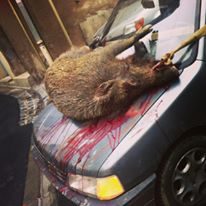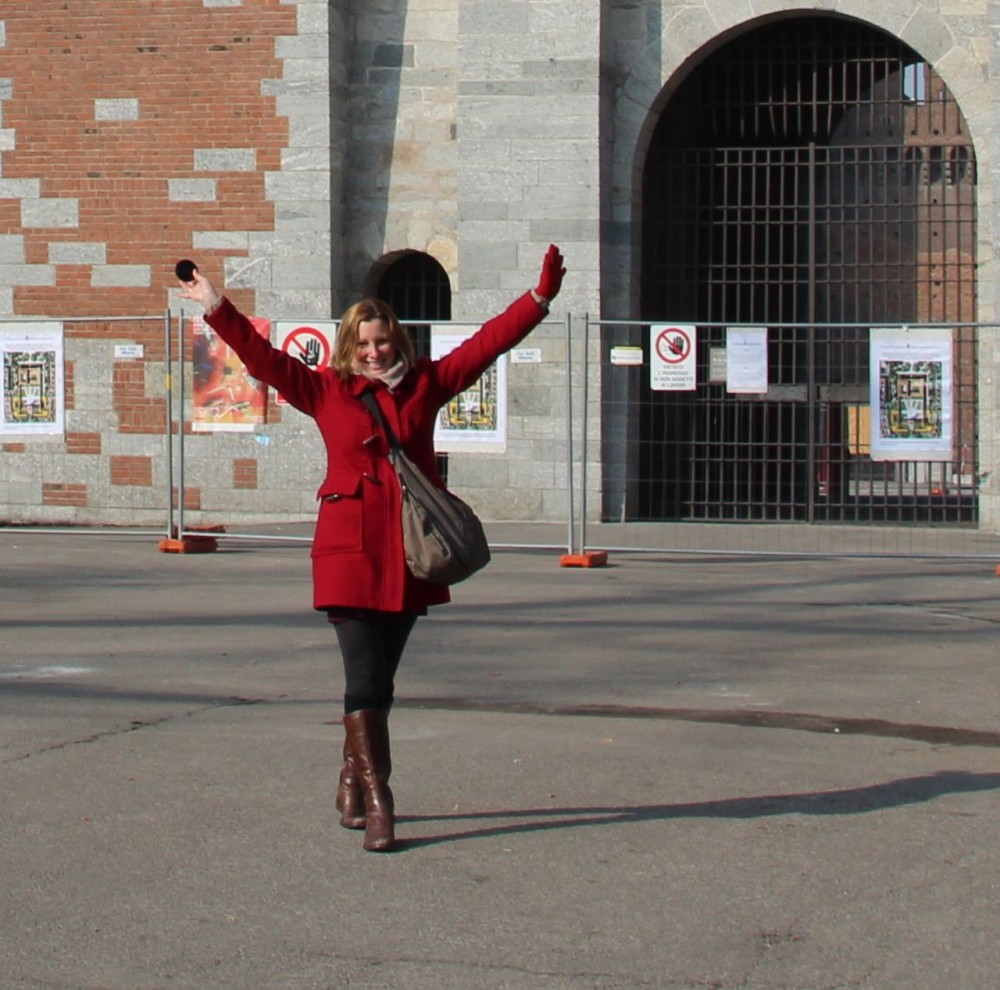“Kill the beast! Cut his throat! Spill his blood!” Lord of the flies
The first time I saw a wild boar was on our first day on our very first visit to France. We were zipping along the one lane twisty road at high speed, heading towards my friend’s home high in the Pyrenees mountains. I remember the trip well as I was car sick, hoping we would arrive soon, and wondered how he knew no one would come from the other direction. He slowed down to take a turn, when a mother boar and her three little striped piglets crossed the road right in front of us. She was surprisingly large, and her brood surprisingly small. On that same evening trip up those mountains, we also saw a huge rabbit with long legs and ears (a jack rabbit or a hare?) and also an enormous black bat who swooped over the windshield of our car in the pitch black scaring the bejesus out of me. If being sick wasn’t enough.
Our friend said, ‘I have lived here nearly 15 years, walked most of these mountains and have never seen any of those animals close-up, and here you are, visiting for the first time, and you see them all in one day!’
Then the next time I saw a wild boar other than on a plate at the local restaurant, was on the hood of this car. I was worried the police might come but soon realized it was the police that drove the young hunters around Capestang. The town seemed to share in the trackers celebration, as it was his first kill in the vineyards above our village. After they gutted the animal in the street in front of their home, they let the blood flow directly down the sewage in a steady stream of red. Locals usually share the meat with their family members and neighbours. It was the first time I had seen anything like this before.
It reminded me of the scene from INTO THE WILD, the movie about a man, McCandless, willingly living off the Alaskan land. Where in the heat of summer he manages to kill a small moose with his .22 rifle. He quickly had to figure a way to dry the meat before the bugs would infect it. Needless to say the insects won and the majority of the meat went to the coyotes.
I am not sure who won that battle on that sunny summer day in Capestang, as we biked past the young men before the end of the scene. The men were very proud of themselves, and told us it was their first time shooting a Sanglier.
Sangliers or wild boar cause a lot of damage to vineyards because they love eating ripe grapes. Hunting season begins at harvest time. They are generally shy animals but the French hunt their prize meat with trained hounds, and the hunters suite-up in fluorescent vests while walking through the vineyards so they don’t accidentally kill one another. 10s of thousands are killed every year in France.
“Kill the boar, but another eats the flesh”. Latin Proverb
Sanglochon, a cross breed between the wild boar and domestic pigs were once a farmer’s product throughout Belgium and France, but after the farmers realized the meat was not as sought after as either its counterparts, many simply released them into the wild.
In Northern France they have a problem with over populated areas of these beasts, although timid, their tusks can be dangerous, especially for the hunting dogs. They encroach on areas inhabited by humans causing car accidents. These highly adaptable animals can be found foraging through garbage bins, but prefer to live in large groups in secluded forests. They have been increasingly spotted in town streets and gardens in recent years.
Life span 10-12 years. 4-7 piglets at once, and they can weigh 200-300 kilos!
The only thing I have ever eaten from local wild boar is paté made by my French teacher. Here is a step by step account on how to make it.
You basically marinate the meat overnight in wine, add in fattier cuts of meat, season and grind. Put into jars and put away just like when you put away fruit for the winter. What I find delicious about these simple foods is the use of local ingredients, (herbs, wine, and spices) and how the French utilize every part of the animal without any waste.
There is an interesting Capestang legend about an albino sanglier who lives in the forest just over the ridge on the far side of our village over towards Domaine de la Provenquiere. Being nocturnal, he has been spotted throughout the last decade, rummaging through the vines, glowing in the moonlight near the winery. He is said to have many offspring and is the dominant male in the area. Many hunters have gone out looking for this particularly intelligent sanglier who somehow manages to keep dodging the hunter’s bullets. He may be long dead, or he may be long eaten, but they say if you see the giant male boar it is supposed to bring you luck!
Albinism in biology is the “Congenital absence of any pigmentation or coloration resulting in white hair and pink eyes in mammals.” Very rare indeed! You will know him when you see him!











